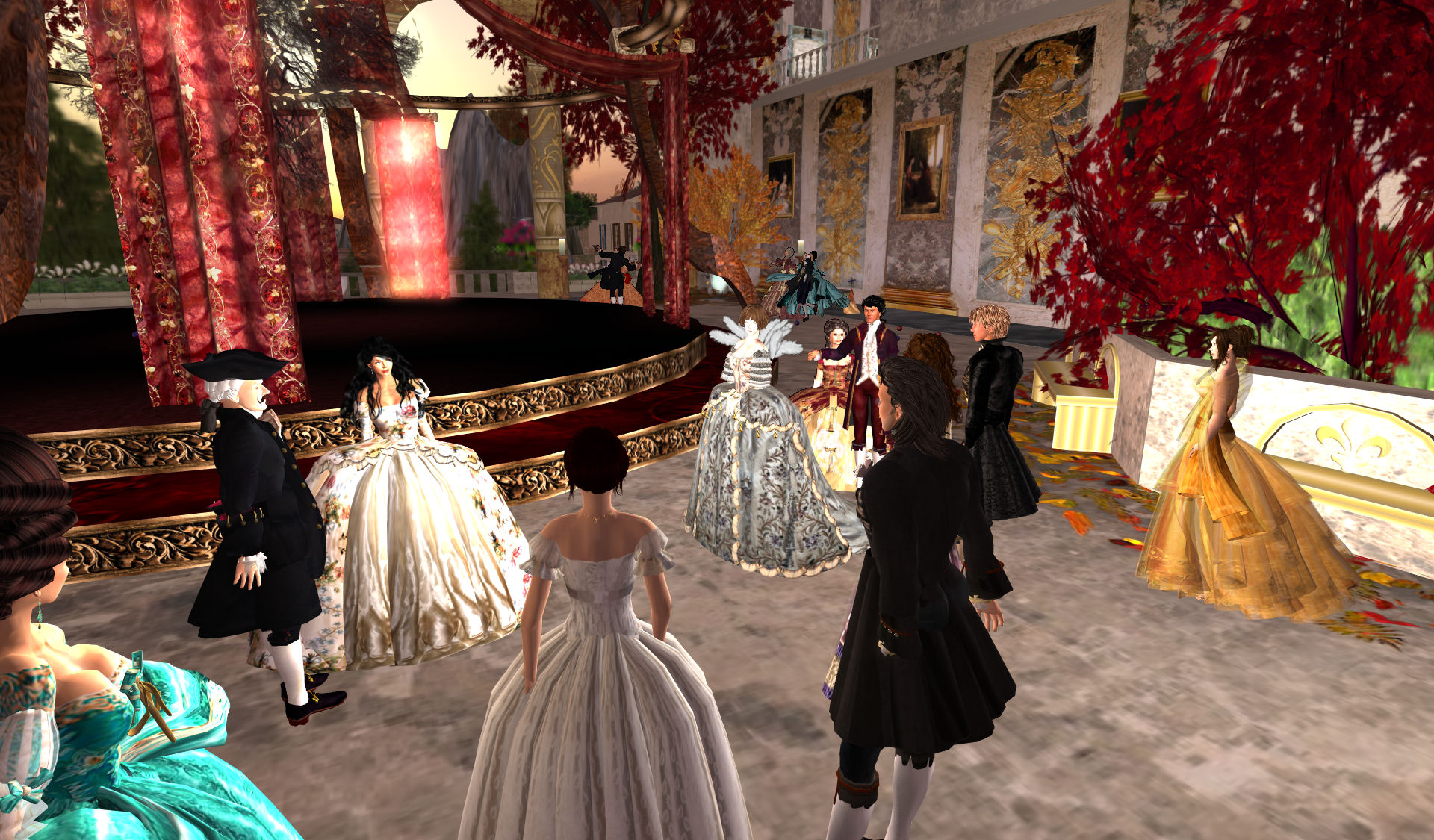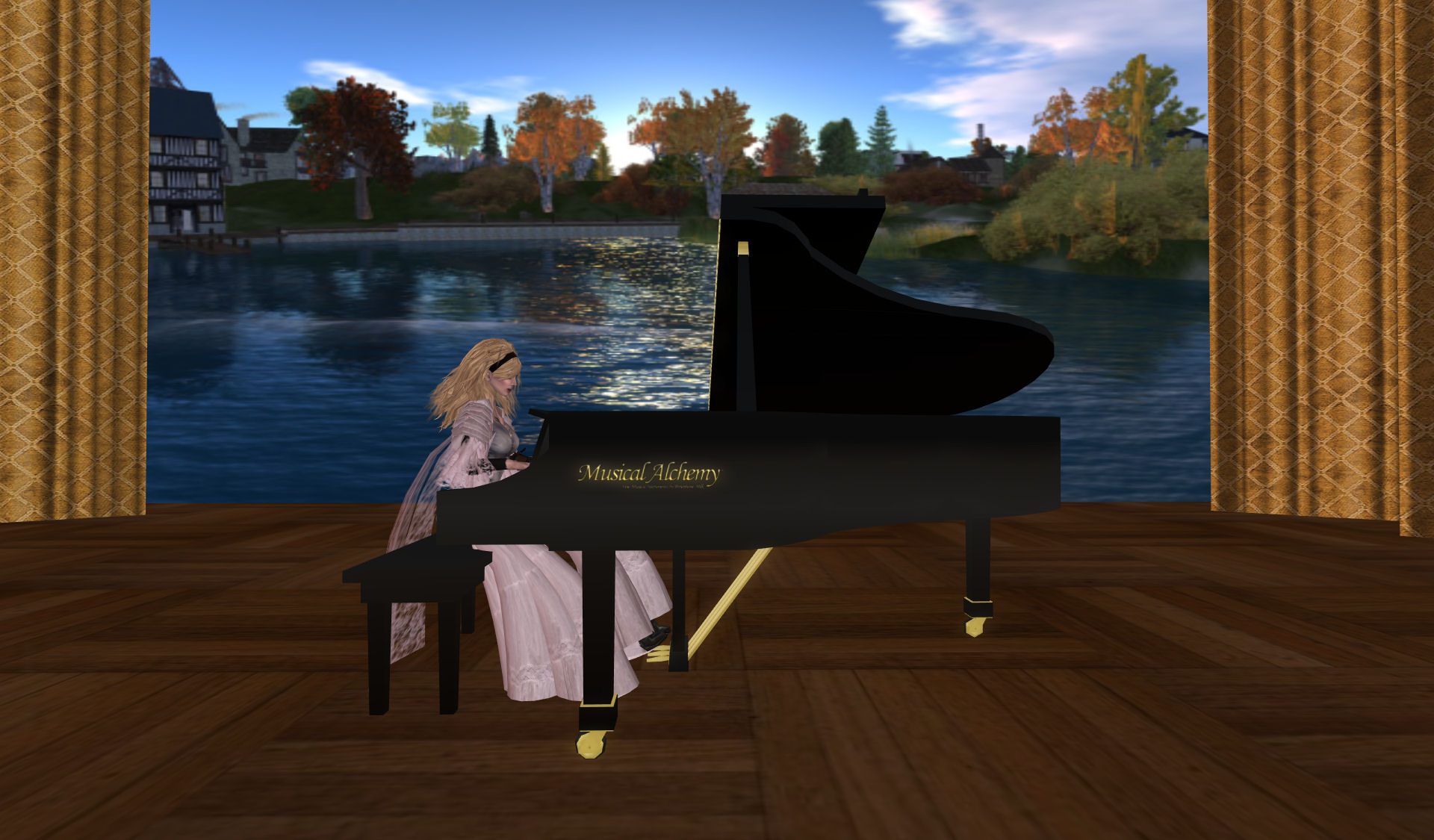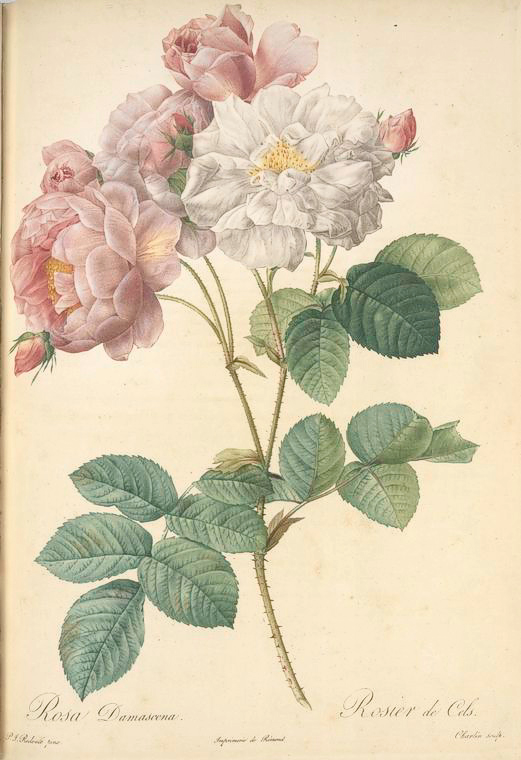Blogs
Court etiquette, why was it so important?
Everyone who is just a little bit interested in court life of the ancient rgime knows how strict the etiquette was and that the courtiers followed in our eyes strange ceremonies like for example the leve and coucher. In this blog I will explain you why the court etiquette was considered so extremely important.
A perfect example of the court etiquette and ceremony is the leve (the ceremony of the rising of the king). Everything in this ceremony is extremely precisely organized. It was obviously needed the king would get dressed but it also had a social function. The king would use private moments like getting dressed to create differences between ranks, give favors and to show his displeasure. This gave the etiquette a very symbolic function as well.
The king Louis XIV had most certainly not ''invented'' the whole etiquette himself. But he did use the etiquette for his authority. The king wouldn't only follow the official ranking system but also made use of small occasions to decide the status of a courtier. By doing so, he uses the concurrence between courtiers for favors and privileges for his own authoirty.
During the reign of Louis XVI and Marie Antoinette the courtiers followed the same etiquette as during the reign of Louis XIV but everyone from all ranks disliked the etiquette. However, giving up the etiquette was no option. Because that would mean giving up all the privileges and losing power opportunities for everyone.
Even the smallest change in the position of people in the etiquette would be a change of the entire social ranks in the court society. Because of this everyone was extremely sensitive about changing the etiquette. You would think its strange that people would be so sensitive about it especially when you realize that at the end of the 18th century a lot of people disliked the etiquette and followed it with distaste. However, when the queen Marie Antoinette wanted to change the etiquette a little bit it was the high nobility that complained. For example, when a duchesse had the privilege to sit around the queen it would be annoying if someone of lower rank could do so as well.
There also is another reason why the court etiquette never stopped. This is because there always was concurrence between courtiers about power, status and prestige opportunities. Because of this courtiers would actually make each other following the etiquette. The lower ranked courtiers gave pressure on the high ranked ones and the high ranked courtiers on the lower ranked ones, this stabilized the system and mechanism of the etiquette and so the etiquette would be followed till the revolution.
Btw: I would like some comments with perhaps positive or negative feedback on my blogs.
Redout became an official court artist and the personal art teacher of Marie Antoinette, painting the gardens of Le Petit Trianon. In 1798, Empress Josephine became his patron and the gardens of her beloved Malmaison one of his subjects.
To the reader of my diary, centuries after I have lived richly and loved greatly, I leave my words, in which you will be taken on a journey into a world few are privileged to or are really aware of.
Judge if you wish, it matters not.
I am among the most desired of women...not your friend, servant, or even wife. I am Courtesan. The courtesan is one of the most accomplished of women of our time. The art of the courtesan is often incorrectly and unjustly labeled as mere prostitution, this is far from the truth. Any woman can be a simple streetwalker, but it takes a woman of impeccable beauty and spectacular grace, who has a witty and artistic mind, and possesses a gentle and soothing demeanor to make it as a successful courtesan. A man seeks a courtesan for more than her body, but also for her mind, her grace, and her talents in the arts and conversation. We dedicate our lives to learning to speak to men about topics ranging from the weather to politics, how to play an instrument and sing, to dance, to dress and put on make-up, and how to seduce first with the mind and then with the body. We are well-read, well-educated, and well-mannered at a time when most women could do no more than read a Psaltary and bear children.
The noblest of men, with large....egos and purses to match, eagerly seek and compete for our attention. We are dinner companions, entertainers, singers, poets, and lovers to some of the most prominent men of our time. I and they are trained in many arts, only one being the art of love. We hold parties, and make more than one lord envious of the current patron.
We as courtesans are an attainable dream. I and my sister courtesans exhumed charm, lust, and opulence. Men come to us to experience the fantasy of love and application of knowledge that most of their wives cannot supply. They present us with gifts, and we, in turn, would consider their proposals. We hold power when women were allowed none.
Through my entries you will be given a glimpse...nay...an education of my chosen world in which many women have risen to the rank of immortal and will be remember through the annals of time.
I am every man's fantasy and desire....I am Courtesan.
Residence of courtiers in the Ancien Rgime.
Typical for courtiers of the Ancien Rgime is that they at least the important ones had a apartment at Versailles (the house of the king) and a home, in most cases the Htel. The name of the home depends on your status. For example, the bourgeoisie lived in Mansions, nobility in Htels and princes and the king in a palais. Sometimes, the residence of a high clergy would be called a palais as well.
Besides that they would also have Chateaus, but we wont pay attention to that in this blog. Courtiers would have one of more estates which were their biggest part of the income.
Htel.
The porche would give access to visitors and carriages. In the hotel itself you would find:
Salons: In the middle would be one big salon which would take 2 floors high.
On one side of the big salon you would find the rooms of the appartement de societe which gave access to a antichambre, garderobe, sale de compagnie, dining room and so on. The appartement de socit would mostly be for close friends. They, mostly the wife, would go here to accompany friends in a relaxed way, so without the strict court-etiquette.
On the other side of the big salon you would find the appartement de parade, with parade-cabinets, parade-bedrooms and so on. The appartement de parade would be mostly for official occasions, like important people visiting their house or when people are congratulating the wife after she gave birth.
- Appartments priv: One would be on the left side and the other one on the right side of the big courtyard. They would be almost similar. Next to their bedroom would be a cabinet, antichambre and garderobe.
- Basse-Cour: The basse-cour was a small courtyard with around it buildings where the domestiques could do their work. Examples of those buildings/rooms are:
Stables.
Kitchen.
Laboratoire doffice (they would make ice there)
Garde-Manger (cold kitchen)
Office pare (where they would lock up the silverware)
Staff/domestiques:
The courtiers would have a lot of staff, in French called domestiques, in and around their htel. A few examples of the domestiques you would find in a htel:
Maitres dhtel: The maitres dhtel had the job to be in charge of the finances and supervise all the other domestiques.
Maitre dhtel: Supervises the domestiques and reports for example when dinner is starting.
Officier doffice: Was in charge of the people who were setting the table and the silverware (which was in the office pare).
These are just a few examples of staff you would find in a hotel. You would obviously also find maids, stable men, a cook (chef de cuisine) and so o 

My life was hectic. So many changes took place. Some wonderful, others more eh... sad
You know I wrote I thought I was falling in love? Well dear diary, believe me.. I did.
I met this lovely lady, Mademoiselle Stormy. She used to live in a nice cottage near the Mediterranean. I met her at Marias tavern, after my fight with the Mysterious Musketeer. A few days later I was walking in the Provence region as I noticed this lovely lady again, standing in her doorway and waving at me. Ok I must admit, someone had told me where I could find her so Our meeting wasnt entirely by chance We had a lovely talk. I found her very charming. And when I said goodbye, I did hope we would meet again.
Very big was my surprise that I got a letter the next day, where she apologized to me not having been a good host, because she didnt had offered me something to drink. So she asked if I wanted to come over and have a glass of champagne at her place. Can you imagine how I felt? Off course I accepted the invitation and when I saw her again I was sooo nervous I could only stumble some silly phrases Butit was the start of a great friendship. We had many nice and silly chats. I did liked her humor and jokes right away. And she was very sweet. I didnt dared to admit it, but I was falling in love
It wasnt till a friend of hers started to threaten me at the April Coeur fair, not to play with Stormys feelings that I realized there was something more going on. Could it be possible?
Ow my God I had been blind. Something had happened I could not hope for in my wildest dreams My dear friend Stormy had fallen in love with me also.Dear diary,
I lived in some kind of happy arousal for days in a row. That first REAL slow, that first REAL kiss The feeling of being in love, being loved by someone Words fail me to describe the state I was in those first days. We became closer every day. Our love grew deeper and deeper. It was the time one could see me run from Touraine to Provence and vice versa. The time we exchanged love letters by pidgeon, so that you could follow the poop trail all from my cottage to hers
And I am eternally grateful to Maria and Fletch that they granted me the permission to propose Stormy on their wedding day. I felt the luckiest man on earth that moment she accepted. It was a moment never to forget.
Now we are so many months further in time. At the 6th of September I married the most wonderful woman in the universe. We found ourselves a nice home. I moved all my stuff over from my old cottage to our new place. There I have a nice room to see my patients now. We have lots of animals at our domain: cows, pigs, geese Even a few bears have been spotted nearby.
Also a sad thing happened. My infirmire left us. She already acted from a distance for some weeks In the end she was very angry at me. She didnt wanted to stay. She accused me from running away from things, from hiding in my work. She went berserk and threw lots of ugly words at my head
Well,enough sadness. A new era in my life has started. I am becoming a settled civilian after all. I guess my wondering days are over. Instead of sleeping in a haystack one can see me sit in the Royal Opera these days. I even have started to like wine and champagne instead of beer. Although I will never refuse a good pint of Ale.
To conclude, I think captain Evans would have been proud of me. Cheers brother, where ever you are now. I am sure you are looking upon me from the heavens and are wishing me all the luck in the world now.
P.
 the Official Opening it will be during next month but u can have a look there
the Official Opening it will be during next month but u can have a look there  it is already a success , many people is visiting the sim already
it is already a success , many people is visiting the sim already  . its just the first Hindi Rp sim in SL.The reaction its beiing really very positive i have never expected that ! people is really excited with this Idea of the Imperial India during the period of the magnificient splenderous Hindustan and is Mughal Emperors, many things to rp there, many action, many histories to play, many events, and many excitment!!! We have agreement with other sims for wars and battles, if you like some adrenaline and excitment have a look there , you will be very welcome
. its just the first Hindi Rp sim in SL.The reaction its beiing really very positive i have never expected that ! people is really excited with this Idea of the Imperial India during the period of the magnificient splenderous Hindustan and is Mughal Emperors, many things to rp there, many action, many histories to play, many events, and many excitment!!! We have agreement with other sims for wars and battles, if you like some adrenaline and excitment have a look there , you will be very welcome 
Emperor Akbar was thirteen years old when he ascended the Mughal throne in Delhi , following the death of his father Naseeruddin Muhammad Humayun. During his reign, he eliminated military threats from the powerful Pashtun descendants of Sher Shah Suri , and at the Second Battle of Panipat he defeated the newly self-declared Hindu king Hemu .It took him nearly two more decades to consolidate his power and bring all the parts of northern and central India into his direct realm. He influenced the whole of the Indian Subcontinent as he ruled a greater part of it as an emperor. As an emperor, Akbar solidified his rule by pursuing diplomacy with the powerful Hindu Rajput caste, and by admitting Rajput princesses in his harem .
Akbar's reign significantly influenced art and culture in the country. He took a great interest in painting, and had the walls of his palaces adorned with murals . Besides encouraging the development of the Mughal school , he also patronised the European style of painting. He was fond of literature, and had several Sanskrit works translated into Persian and Persian scriptures translated in Sanskrit apart from getting many Persian works illustrated by painters from his court.During the early years of his reign, he had an intolerant attitude towards Hindus and the other religions, but he exercised great tolerance after he began marriage alliances with Rajput princesses.His administration included numerous Hindu landlords, courtiers and military generals. He began a series of religious debates where Muslim scholars would debate religious matters with Jains , Sikhs , Hindus , Crvka atheists, Jews, and Portuguese Roman Catholic Jesuits . He treated these religious leaders with great consideration, irrespective of their faith, and revered them. He even founded a religious cult, the Din-i-Ilahi (Divine Faith), which included the teachings of all the major religions of the world but it amounted only to a form of personality cult for Akbar and started dissolving after his death
Mein aasha karta hoon ke hum jaldi mileinge (i Hope to see u soon)
Empress Salima Sultan Begum
Every reigning generation of the Bernadotte dynasty represented
Every reigning generation of the Bernadotte dynasty is represented in the choice of silver, porcelain and glass used for the table setting of the table of honour and the main table in the Hall of State. The table silver has been chosen so that the banquet begins and ends with the first and last generations, from King Karl XIV Johan and Queen Dsire to King Carl XVI Gustaf and Queen Silvia.
The Brazilian silver service
The table silver in other words, the decorative silverware comes from the Brazilian silver service, which belonged to Princess Amalie of Leuchtenberg. She was the sister of the future Swedish Queen Josefina, and the silver service was a gift from her.
The Geatish service
The table will also be adorned with four silver-mounted crystal vases from the Geatish silver service. This service was commissioned by Crown Prince Oscar (the future King Oscar I) from Adolf Zethelius and Johan Petter Grnvall. Zethelius made the pieces in 1827. Grnvall added to the service in the 1830s, and Gustaf Mllenborg made additional pieces in the 1840s.
The flower baskets used for the wedding table setting are from the pieces made by Zethelius in 1827. The architectural inspiration from the neo-Gothic style of the time is particularly clear. Certain parts are reminiscent of miniature Gothic pavilions.
Wedding gift
All the glassware was given to The King and Queen on the occasion of their wedding in 1976 by the Riksdag and the Government. In other words, this was the Swedish people's wedding gift to the couple. The Crown Princess Couple received a similar gift at their first pre-wedding reception: 1,000 Orrefors glasses designed by Erika Lagerbielke.
Silver plates
All guests' place settings will include silver chargers. The chargers used at the top table were commissioned by King Karl XIV Johan, while the others date back to the late 18th century and were probably commissioned by King Adolf Fredrik and Queen Lovisa Ulrika and by King Gustav III.
The first course
The porcelain is from the State service. The plates have gold-edged rims and are decorated with small national coats of arms. The first pieces from the service were commissioned in France in the 1850s. Additional pieces were then commissioned in Sweden on various occasions up until the 20th century. Both Rrstrand and Gustavsberg have been suppliers.
The cutlery was commissioned by Queen Dsire, the first Bernadotte queen. They feature the monogram EBD (Eugenia Bernhardina Desideria), and are gold-plated. They were made in Stockholm around 1830-40.
The fish course
The porcelain was made by Knigliche Porzellan-Manufaktur (KPM) in Berlin, probably in the 1760s. KPM was an important porcelain manufacturer, founded in 1761 at the initiative of Frederick the Great of Prussia, the brother of Queen Lovisa Ulrika, and is still in business today.
The plates have wavy rims decorated in gold, with a pattern of multicoloured flowers. The service was bought by King Oskar II in 1886, so the pieces were already antiques at the time.
The cutlery is the well-known Swedish design Olga. The forks are Swedish, and were made in the mid-1800s, while the knives in the same design were commissioned by King Gustaf VI Adolf in the 1950s.
The meat course
The porcelain is from a service commissioned by King Gustaf V in 1910. The plates are white with gilt lattice-work rims, with medallions featuring the monograms of King Gustaf V and Queen Victoria and the lesser national coat of arms.
The cutlery was commissioned by Queen Josefina, and the design is called Prince Albert.
Dessert
The guests at the table of honour and some of those seated at the long table will eat from plates from the great Svres service. This was a gift from Louis XVI of France to the future King Gustav III on his visit to Paris in 1771, when Gustav was still crown prince. Other guests at the top table will eat from copies of this service, commissioned by King Karl XV when he was crown prince.
King Fredrik Adolf, who came on the same visit, also received a Svres service. The manufacturer's archive documents list them as a single service, and the various pieces are recorded in great detail.
The Svres service
Svres is the most famous of all French porcelain manufacturers. The factory was founded in Vincennes in 1740, before moving to Svres in 1756. The company enjoyed the patronage of both King Louis XV and Madame de Pompadour from the very start, and in 1759 Svres became a royal supplier.
From this time onwards, Svres was a leading European porcelain manufacturer. Svres porcelain was often given as a gift by French royalty, and King Gustav III also received a Svres service on his visit to France in 1784.
Since the 1950s, this service has only been used on three occasions: when Queen Elizabeth II of the United Kingdom visited in 1956, for the French state visit of 2000, and for The King and Queen's wedding luncheon in 1976, when larger pieces from the service adorned the table. On that occasion, the plates were from a different service.
The cutlery was commissioned by King Karl XIV Johan. The original pieces were produced in France, with several subsequent commissions having been produced in Stockholm. The monogram, which is in relief, is cast into the cutlery. The design is unusually opulent, and the cutlery is gold plated.
The wedding cake
The plates used for serving the wedding cake in the Bernadotte Gallery are from a service commissioned by The King and Queen.
The coffee cups and tea cups were designed by Karin Bjrqvist, and were a gift to Queen Silvia on her 50th birthday from the Riksdag and the Government.
How I recall the day, 6 months ago, when I challenged Dr Panacek to a possibly deadly duel, if he had turned out to be the man I was looking for...
His fencing was unexperienced, then, but he proved to be so courageous! and fortunately I did not have to kill him!
He was cheered by a crowd of friends and residents, and among them a so-called Miss Stormy Lorakeet ( they had not yet met each other, I've been told).
He began the fight as a simple and unemployed country doctor, sleeping in haystacks, and after the duel he entered gloriously the tavern with a roaring crowd of friends and admirers greeting him as the heroic, modest and humorous Man he indeed was.
Stormy looked already at him with stars in her eyes.
Oh, I haven't done anything good in my life, except that day, maybe: unconsciously, unwillingly, I may have been the spark that ignited first what was to become the flame of love in their heart.
It would be unfair to take all the credit though:I did not play a big part, they would have met and fallen in love anyhow, for they were so obviously meant for each other.
But it warms my solitary heart to believe I have done this one good deed at least: creating the opportunity for two lovers to meet.
Out of the bad, sometimes, the best may come out: in this case, it did!
Mrs Panacek, Doctor, let me wish you a long and happy married life in the Duchy of Coeur: I've traveled a lot, and believe me, there's no other place like it,thanks to people like you and all your friends.
Le Chevalier Mystere


